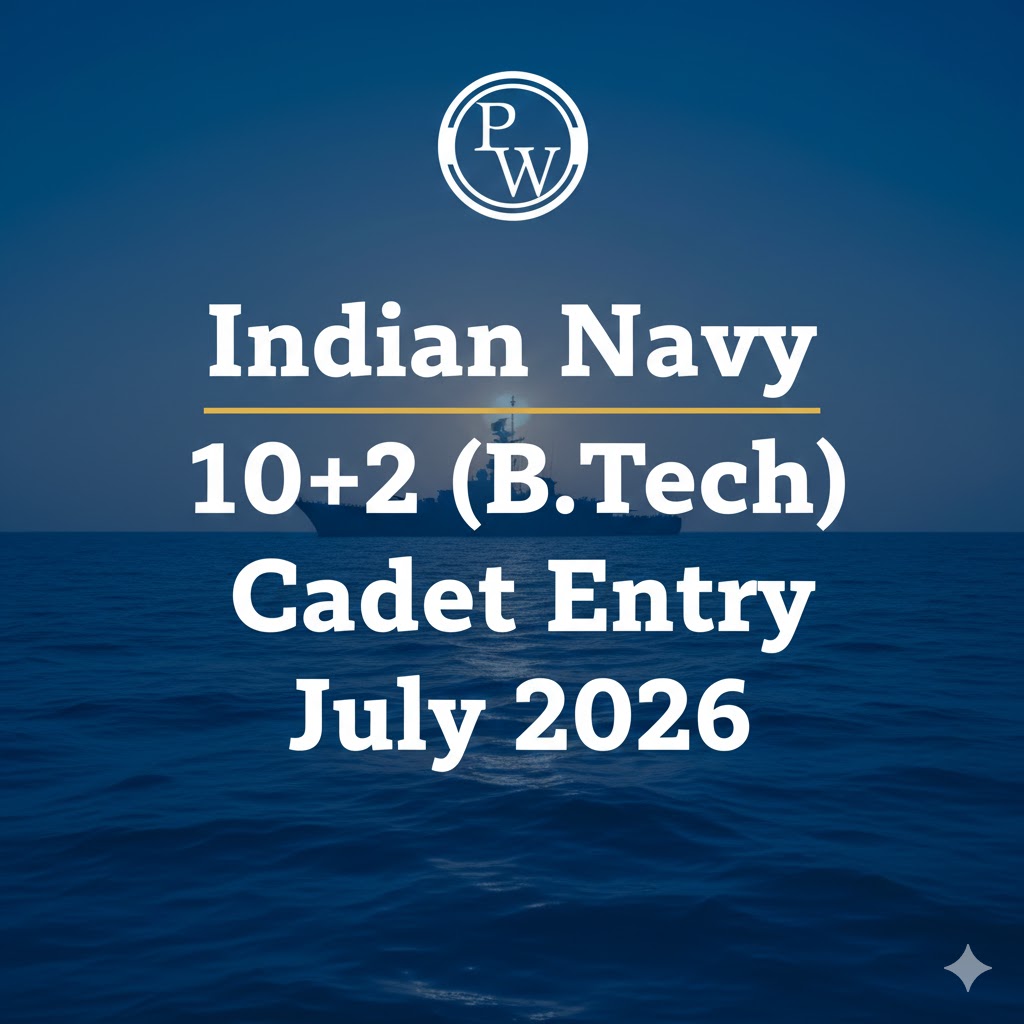
The Indian Navy is a formidable force in maritime defence, equipped with cutting-edge Indian Navy weapons and advanced naval combat systems. Over the years, India has emphasised developing indigenous navy weapons and systems to strengthen its self-reliance and operational capability in the strategic Indian Ocean region.
India’s maritime strength largely depends on the advanced Indian Navy weapons, which are designed to secure the nation’s vast coastline and safeguard its strategic interests. Over the years, the Navy has integrated state-of-the-art technology, indigenous systems, and modern naval defence technology to keep pace with global maritime powers.
Indigenization of Indian Navy Weapons
The Indian Navy's weapon systems combine modern technology with the spirit of Atmanirbhar Bharat, showcasing a strong trend towards indigenous development. From sophisticated naval guns to advanced missile launchers, many Indian Navy Weapons now feature high indigenous content. This shift ensures enhanced control over technology and better customization to India’s unique maritime defense requirements.
Indian Navy Missiles
This table summarizes India’s missile systems at sea (Indian Navy) — ballistic, cruise, anti-ship, air-to-air, and surface-to-air, along with origins, operational platforms, and status.
| Indian Navy Missiles | ||||
|
Name |
Origin |
Type / Range |
Launch Platforms |
Notes |
|
Sagarika (K-15) |
India |
Submarine-launched ballistic missile (SLBM), Short-range (~750 km) |
Arihant-class SSBN, S5-class SSBN |
India’s first operational SLBM. |
|
K-4 |
India |
SLBM, Medium-range (~3,500 km) |
Arihant, S5-class SSBN |
Tested successfully; in induction process. |
|
K-5 (planned) |
India |
SLBM, Intercontinental (~5,000–6,000 km) |
Arihant, S5-class SSBN |
In development. |
|
K-6 (planned) |
India |
SLBM, Intercontinental (>6,000 km) MIRV capable |
S5-class SSBN |
Future SLBM; under development. |
|
Dhanush |
India |
Ship-launched ballistic missile (Short-range) |
INS Rajput, INS Subhadra, INS Sukanya |
Navalized variant of Prithvi-II. |
|
LORA |
Israel |
Ship-launched theater/quasi-ballistic missile |
[Unspecified in IN] |
Tested/possible integration; citation needed. |
|
BrahMos (various) |
India/Russia |
Supersonic cruise missile (~300–600 km) |
All destroyers except INS Rana; Talwar-class (Batch 2+), Shivalik-class, Nilgiri-class frigates, also aircraft & coasts |
Two-stage ramjet missile; land-attack/naval/air variants; Extended Range (ER) ordered. |
|
BrahMos-II |
India/Russia |
Hypersonic cruise missile (M=7, under development) |
Planned for surface ships & aircraft |
Still in development phase. |
|
Klub-S/N (Kalibr family) |
Russia |
Supersonic cruise missile |
Talwar-class frigate (Batch 1), Sindhughosh-class submarines |
Navalized Russian missile. |
|
SS-N-2D Styx (P-15 Termit) |
USSR |
Anti-ship missile |
Veer-class & Khukri-class corvettes |
Legacy missile; largely retired. |
|
Harpoon Block II |
United States |
Anti-ship missile |
P-8I Neptune aircraft, Shishumar-class submarines |
Planned integration with US help. |
|
Kh-35E |
USSR/Russia |
Anti-ship missile |
Brahmaputra-class frigate, Kora-class corvette, Veer-class (Prabal/Pralaya) |
Comparable to US Harpoon. |
|
Exocet |
France |
Anti-ship missile |
Kalvari-class (Scorpène) submarines |
Export version for Indian subs. |
|
Sea Eagle |
UK |
Air-launched anti-ship missile |
Tu-142, Il-38, Sea Harrier (retired), Sea King |
Retired from service. |
|
Rampage |
Israel |
Air-launched anti-ship missile |
MiG-29K (future integration) |
Planned weapon integration. |
|
NASM-SR |
India |
Air-launched short-range anti-ship missile |
Westland Sea King, MH-60R Seahawk, HAL Dhruv |
Under development. |
|
NASM-MR |
India |
Medium-range anti-ship missile |
Warships, HAL Tejas, HAL TEDBF |
Under development. |
|
R-73 |
USSR |
Air-to-air missile, Short-range |
MiG-29K |
Within-visual-range (dogfight). |
|
R-77 |
USSR/Russia |
Air-to-air missile, Beyond Visual Range (BVR) |
MiG-29K |
Active radar guided. |
|
Astra Mk1 |
India |
Air-to-air missile, Long-range (~110 km) |
MiG-29K, HAL TEDBF (future) |
India’s first indigenous AAM in service. |
|
Astra Mk2 (dev) |
India |
Long-range (~160–200 km) |
MiG-29K, HAL TEDBF (future) |
Under development. |
|
Astra Mk3 (dev) |
India |
Very long range (~350 km, solid fuel ducted ramjet) |
Future MiG-29K, TEDBF |
In advanced test stage. |
|
Barak 8 (LR-SAM) |
India/Israel |
Long-range SAM (~100 km) |
INS Vikrant, INS Vikramaditya, Visakhapatnam-class & Kolkata-class destroyers, Nilgiri-class frigates |
Navy’s primary fleet air defense. |
|
VL-SRSAM |
India |
Short-range SAM (~25–30 km) |
INS Rana (planned), Kamorta-class corvette |
Under testing. |
|
Shtil-1 |
USSR |
Medium/short-range SAM (Buk Naval) |
Delhi-class destroyers, Shivalik, Talwar-class frigates |
Russian-origin naval SAM. |
|
Barak 1 |
Israel |
Short-range SAM (~10–15 km) |
INS Vikramaditya, Delhi-class, Rajput-class, Shivalik & Brahmaputra-class frigates |
Legacy CIWS missile defense. |
|
S-125M (naval Pechora) |
USSR |
Short-range SAM |
Rajput-class (Ranvir, Ranvijay, Rana) destroyers |
Soviet-era legacy system. |
|
Igla-M (SA-N-10 Grouse) |
USSR |
Very short-range (MANPADS-based naval) |
Mk IV LCU, Talwar-class, Car Nicobar-class, INS Aditya |
Point defense. |
|
SA-N-5 (Strela-2) |
USSR |
Very short-range SAM |
Kora, Khukri, Veer, Abhay-class corvettes |
Legacy handheld-type missile. |
Torpedoes
|
Name |
Origin |
Type |
Guidance / Homing |
Launch Platforms |
Notes |
|
Whitehead A244-S |
Italy |
Lightweight; ASW |
Wake homing |
Surface ships, helicopters |
Widely used lightweight anti-submarine torpedo |
|
APR-3E |
Russia |
Lightweight; ASW |
Active |
Tu-142 (retired), Il-38 (retired), Ka-28 |
Primarily aerial delivery |
|
CET-65E (Type 65) |
Soviet Union |
Heavyweight; ASuW |
Passive |
Abhay-class corvettes |
Long-range anti-ship torpedo |
|
Type 53-65KE |
Soviet Union |
Heavyweight; ASuW |
Passive |
Sindhughosh-class submarines; Rajput & Delhi-class destroyers |
Wake-homing heavy torpedo |
|
TEST 71/76 |
Soviet Union |
Heavyweight; ASuW/ASW |
Active / Passive |
Sindhughosh-class submarines |
Versatile Soviet-era design |
|
AEG SUT 264 Mod 1 |
Germany |
Heavyweight; ASuW/ASW |
Active / Passive |
Shishumar-class subs, Kalvari-class subs |
Original German submarine torpedo |
|
DM2A4 Seahake |
Germany |
Heavyweight; ASuW/ASW |
Active / Passive |
Shishumar-class submarines |
Advanced German heavyweight wire-guided torpedo |
|
TAL Shyena |
India |
Lightweight; ASW |
Active homing |
Il-38 (retired), SMART missile, Surface ships, Submarines |
Indigenous lightweight torpedo |
|
ALWT (Advanced Light Weight Torpedo) |
India |
Lightweight; ASW |
Active homing |
P-8I Poseidon & other platforms |
Improved Shyena variant |
|
Varunastra |
India |
Heavyweight; ASuW/ASW |
Active / Passive |
All destroyers; Talwar, Shivalik, Nilgiri-class frigates; Kamorta-class corvettes; Sindhughosh-class subs |
Indigenous advanced heavyweight torpedo |
|
Shakti (Thermal Torpedo) |
India |
Heavyweight |
– |
Under trials |
Next-gen thermal torpedo variant of Varunastra |
|
Takshak |
India |
Heavyweight |
– |
Under development |
Follow-up indigenous heavyweight torpedo |
Cutting-Edge Indian Navy Missiles
A centerpiece of Indian Navy weapons is the BrahMos missile, jointly developed by India’s DRDO and Russia’s NPO Mashinostroyenia. Renowned as the world's fastest supersonic cruise missile, BrahMos can be launched from land, sea, air, and submarine platforms. It boasts speeds up to Mach 3, stealth features, and pinpoint accuracy, making it a critical asset for maritime strike capabilities.
Other important indigenous missile systems include the Naval Anti-Ship Missile (NASM-SR), which features advanced imaging infra-red seekers and two-way data link technology, enhancing precision strike abilities from platforms like naval helicopters.
Modern Navy Combat Systems
Modern naval combat systems integrate onboard weapons and sensors into unified platforms, providing the Indian Navy with superior situational awareness and quick tactical responses. These combat systems coordinate guided missiles, radar, fire control, and tracking systems crucial for modern naval warfare.
Indigenous Navy Weapons and Naval Defence Technology
India’s Naval Science & Technological Laboratory (NSTL) plays a vital role in developing indigenous navy weapons, including torpedoes, underwater mines, fire control systems, and stealth technology for naval platforms. This advances India’s naval defense technology and promotes indigenization in key segments like underwater warfare and sensor systems.
Recent Developments and Naval Modernization
The Indian Navy has built some of its newest and most advanced warships, like INS Udaygiri and INS Himgiri. These ships are stealth frigates—meaning they are designed to be harder to detect by enemy radar.
They are equipped with:
-
BrahMos missiles – extremely fast and powerful missiles used to hit enemy ships or land targets.
-
Barak-8 missiles – used to shoot down incoming enemy aircraft, drones, or missiles (like a protective shield).
-
Indigenous sensors and systems – “made-in-India” radars and electronics that help the ships detect threats and guide weapons.
-
Advanced propulsion systems – modern engines that make the ships faster, quieter, and more reliable.
The Indian Navy (IN) is planning to induct over 80 new warships in the coming decade, including two aircraft carriers and two nuclear-powered submarines, with around five major combatants expected to join the fleet every year. The key shipbuilding initiatives are as follows:
Project 15A and 15B – Guided Missile Destroyers
Mazagon Dock Ltd. is constructing 6,800-ton Project 15A destroyers, each valued at about $622 million. The lead vessel, INS Kolkata, has already been delivered. The follow-on Project 15B allows for the addition of four more ships from the same class. These destroyers are equipped with short- and medium-range surface-to-air missiles, anti-ship and land-attack missiles, a 76.2mm gun, close-in weapons systems (CIWS), heavyweight torpedo launchers, and anti-submarine rocket launchers.
Project 17 and 17A – Stealth Frigates:
Under Project 17, three stealth-capable Shivalik-class multi-role frigates were developed by Mazagon Dock Ltd., all of which are now in service. Their successors are being built under Project 17A, comprising seven frigates at a cost of about $578 million each. Mazagon Dock Ltd. will deliver three ships and Garden Reach Shipbuilders & Engineers Ltd. (GRSE) will deliver four, using a modern modular construction approach. These frigates are armed with surface-to-air missiles, anti-ship and land-attack missiles, CIWS, a 76.2mm gun, ASW rocket launchers, and triple-tube torpedo launchers.
Project 28 – Anti-Submarine Warfare Corvettes:
Designed to serve as the Navy’s next-generation ASW vessels and to promote private participation in shipbuilding, Project 28 has already seen the commissioning of its first ship, INS Kamorta, built by GRSE. Kamorta displaces 3,500 tons, measures 110m in length, and 14m in beam, with a top speed of 25 knots and operational endurance of 3,500 nautical miles. These corvettes carry medium-range SAMs, a 76.2mm gun, CIWS, ASW rocket launchers, and heavyweight torpedo launchers.
Project 75I – Submarines:
The Navy plans to construct all six submarines under this project indigenously.
Indian Navy Weapons FAQs
1. What are the primary Indian Navy Weapons?
2. Which missile is regarded as the most powerful in the Indian Navy’s arsenal?
3. Does the Indian Navy rely on indigenous weapon systems?
4. How important are combat systems in naval operations?
5. What new technologies are being developed for the Indian Navy’s future?










